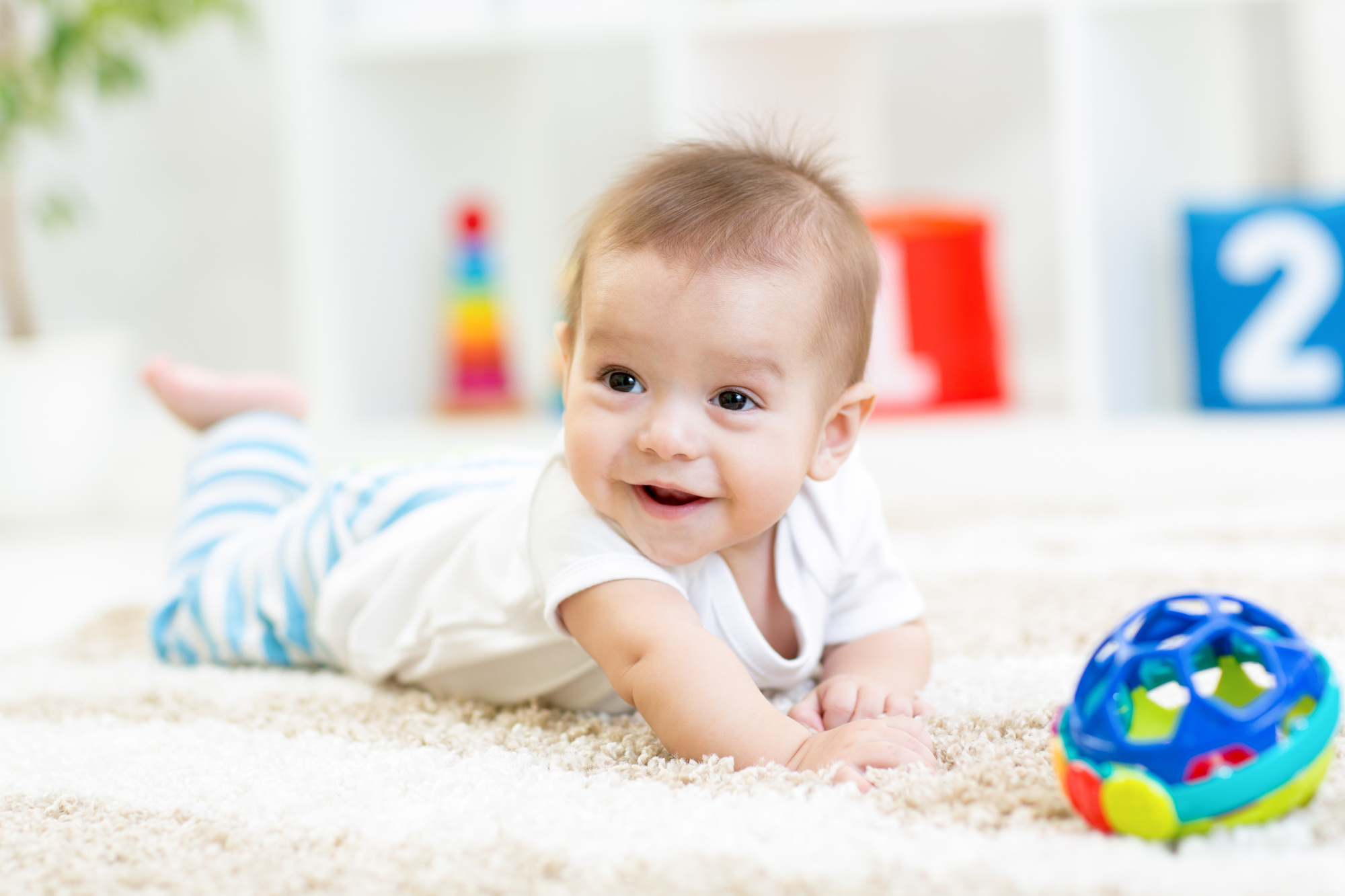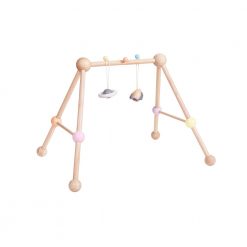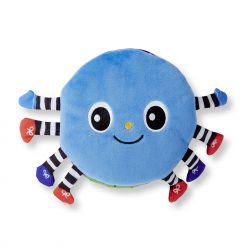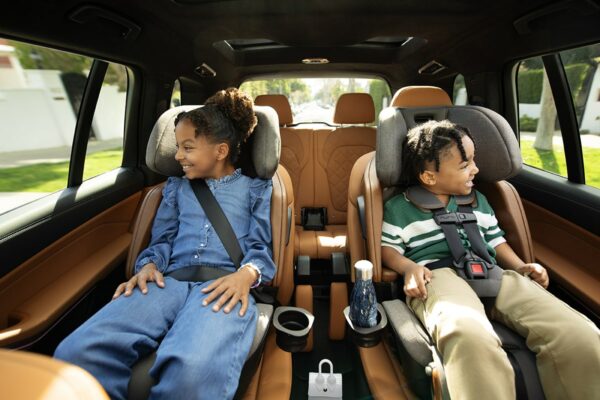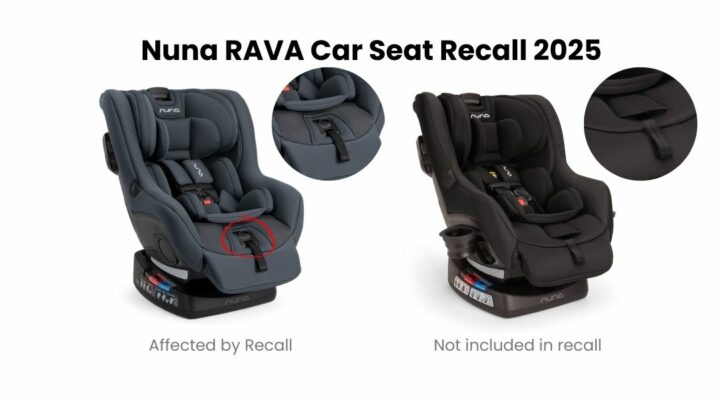When shopping for toys, especially when considering babies and toddlers, you may wonder what the Age Rating on toys means. Is a toy with a lower age rating appropriate for older kids?
Toy Age Labels 101
It’s been a couple decades since the US Consumer Product Safety Commission started regulating toys and manufacturers began following the guidelines, but what exactly do those age labels on toys really mean?
As flashy as some toy packaging can be, there’s one part that is meant to stand out — a bold number that tells you what age a child should be to use it. Yet, a recent study conducted by the Toy Association found 96% of parents admit they either don’t fully understand the age label or disregard it completely when shopping for new toys. This can be dangerous, however, since playing with toys that are too advanced can result in injuries and emergency room visits. In 2017 alone, more than a quarter of a million children in the US were treated for toy-related injuries. Not fun!
What Are Age Labels on Toys For?
So, how are the age labels determined? In the toy industry, age-grading is based on two factors:
- The abilities of children at different ages
- A toy’s specific features, like size and materials.
Third-party labs screen for everything from volume to protect little eardrums to making sure fabric toys are washable, that paint is lead-free, and art materials are nontoxic.
They also evaluate how a little person is likely to interact with the toy based on known behaviors — such as mouthing toys before age 3 — and typical child development rates in terms of physical strength, coordination, and cognitive growth. If there are small parts that could accidentally be swallowed or a large toy with too much heft for a toddler, a toy will be labeled for older age groups to help parents and caregivers avoid giving it to a child who isn’t ready to use it safely.
Can Kids be “Too Old” to Play with a Toy?
Age labels aren’t limits that mean a toy will lose appeal in a year or two as your child grows. They are based on safety factors and the physical realities of small bodies, not the scope a toy’s developmental potential. In fact, it’s common for older children to also find joy in a toy labeled for a younger age group, as parents navigating possession struggles between siblings can confirm. What’s developmentally appropriate for a child all depends on their individual talents, tastes, and interests, so if your little one is drawn to a toy marked for littler ones, the label doesn’t mean it’s off-limits or won’t be stimulating enough — just that it’s safe!
Kids can be amazingly creative with just about anything, and their interest can guide you to a better understanding of what excites and challenges your child. On the flip side, toys that are too challenging for kids can lead to frustration, avoidance, and even all-out rejection, so watch out for those signs as well.
Older Kid’s Toys and Babies
When you’ve got kids of multiple ages in the house, toys that have appeal across age ranges are a great way to encourage cooperation, practice sharing, and increase your peace of mind because you’ll know any toy rated for your youngest won’t be a hazard if it tumbles into a crib. Since toys for older children are too advanced for infants and toddlers, it’s important to make sure they aren’t left in common play spaces and are stored safely in a baby-proof space when not in use. If it’s tough to keep track once the packaging is gone, you can mark storage bins with a permanent marker and teach your kiddos to stow their toys in those cubbies.
Ensuring Safety As Toys Age
Children can be very sentimental when it comes to their first little treasures, but it’s important to routinely examine toys to make sure they are clean and in good condition. Wood that is starting to splinter, seams coming undone, or cracks and damage that could end in an ouch should be removed immediately, repaired if possible, and if necessary, discarded out of sight and reach. Our littlest loved ones need adults to be discerning when selecting and maintaining toys, even if staying safe means a tearful goodbye to a fun favorite.
If you’re a first-time parent trying to stock a nursery or a family friend looking for an age-appropriate gift, the age labels help get rid of guess-work. There are also some general guidelines based on child development you can keep in mind while you do your shopping. To get you started, we’ve compiled recommendations based on advice from the National Association for the Education of Young Children:
Toy Recommendations for Baby By Age
When it comes to toys for the itsy-est infants, anything they can reach for, hold, suck on, shake, and make a little noise with is likely to be an instant win. Look for rattles, large rings, squeeze toys, soft dolls, textured balls, and board books of nursery rhymes and poems for story time. Visually, babies love to look at mobiles, hung pictures of faces, and unbreakable mirrors.
When it comes to toys that produce sound, however, it’s important to remember that your baby’s developing ears are very, very sensitive. If you use recorded lullabies, squeak toys, or rattles, those can be as loud as a car horn if held directly to the ear. If the volume is uncomfortable for you, it could damage your little one’s hearing.
7-12 Months
The bigger and stronger your baby gets, the more they will be moving around. Toys that help them sit, scoot, bounce, push, and pull themselves up to standing can help them build the major muscle groups that will help them start walking. Dump-and-fill toys that have components your kiddo can put in and out of a larger container are a classic choice at this age.
By this age, many children understand their names and many common words. Toys that encourage them to match words and objects will help them learn more vocab, and nesting puzzles where they can discover hidden objects can build on their love of peek-a-boo while encouraging curiosity. Bigger babes may also like cloth puppets, soft building blocks, vehicles with wheels, and water toys for bath time.
12-24 Months
Once your child is one year old, there’s a good chance they’ll be on the go! Kids this age love stories, and can play next to other children in their own safe play zone. At this stage, tots enjoy toys that have photographs of real objects and simple illustrations, as well as toys to create their own drawings with — like wide, washable nontoxic markers.
Playing pretend is a popular pastime at this age, and toy phones, dolls and miniature furniture, dress-up accessories and more realistic looking vehicles are mainstays. Toys that encourage building can be a good next step up from the larger blocks infants use, along with large pegboards and puzzles that encourage them to interact with dials, switches, knobs, and lids.
24-36 Months
Toddlers are quick to pick up language skills and test their physical limits. Although they have some sense of danger, toys that can help them safely jump, climb, hang, and roll around safely are sure to help develop physical confidence and be a big hit. Two-year-olds also have much more strength and dexterity in their hands than infants, and are fond of playing with hand-held toys that have multiple parts, like wood puzzles or blocks that snap together.
Imagination is also in full swing at this age, so toys for playing pretend and expressing creative ideas are a great choice. Construction sets, child-sized furniture and kitchenettes, dress up duds, and non-toxic art supplies are classics that continue to inspire. Picture books and stories with more details than nursery rhymes are good for freshening up story time, and at this age, you can also introduce music players and toy instruments.
3-6 Years
Preschool and kindergarten-aged kiddos have longer attention spans for topics that pique their interest, and they are likely to be talkative and curious, with lots and lots of questions. They like to experiment with new experiences and play with friends, so toys that encourage sharing can help kids at the older end of this age range expand their social skills.
Puzzles and other problem-solving toys with multiple pieces are popular at this age, along with more complex building toys, puppets, and tricycles. When it comes to craft time, you can safely start to introduce small rounded safety scissors, modeling clays, and paintbrushes. If your child is starting to use computers, interactive games and educational software can help them learn and explore the technical side of this world.
Sources
- https://kidshealth.org/en/parents/safe-toys.html
- https://www.thespruce.com/choosing-age-appropriate-toys-for-kids-4118934
- https://www.naeyc.org/resources/topics/play/toys
- https://komonews.com/news/consumer/age-labels-on-toys-are-critical-guidelines-that-many-adults-ignore
- https://www.multivu.com/players/English/8646351-the-toy-association-important-safety-tips/
- https://www.cpsc.gov/s3fs-public/pdfs/blk_media_adg.pdf
- https://www.cpsc.gov/s3fs-public/DRAFT%20Age%20Determination%20Guidelines%20for%20Toys.pdf?xc38j_e7mgBIBA.wPVonS_Q0_MN3fYHz

